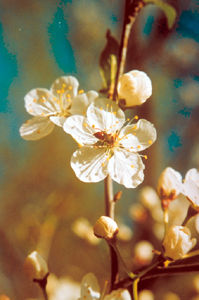Browse "Things"
-
Macleans
Open Skies Agreement Signed
This article was originally published in Maclean’s magazine on March 6, 1995. Partner content is not updated.
"https://development.thecanadianencyclopedia.ca/images/tce_placeholder.jpg?v=e9dca980c9bdb3aa11e832e7ea94f5d9" // resources/views/front/categories/view.blade.php
https://development.thecanadianencyclopedia.ca/images/tce_placeholder.jpg?v=e9dca980c9bdb3aa11e832e7ea94f5d9
-
Article
Opening of Parliament
The opening of Parliament may refer either to the beginning of the first session of PARLIAMENT after a general election or to the beginning of a subsequent session.
"https://development.thecanadianencyclopedia.ca/images/tce_placeholder.jpg?v=e9dca980c9bdb3aa11e832e7ea94f5d9" // resources/views/front/categories/view.blade.php
https://development.thecanadianencyclopedia.ca/images/tce_placeholder.jpg?v=e9dca980c9bdb3aa11e832e7ea94f5d9
-
Article
Operation Dismantle
Operation Dismantle, founded in 1977 by T. James Stark and Peter Brown, was a nonprofit, nonpartisan organization whose goal was to bring the pressure of international public opinion to bear on national governments to negotiate an end to the nuclear arms race.
"https://development.thecanadianencyclopedia.ca/images/tce_placeholder.jpg?v=e9dca980c9bdb3aa11e832e7ea94f5d9" // resources/views/front/categories/view.blade.php
https://development.thecanadianencyclopedia.ca/images/tce_placeholder.jpg?v=e9dca980c9bdb3aa11e832e7ea94f5d9
-
"https://development.thecanadianencyclopedia.ca/images/tce_placeholder.jpg?v=e9dca980c9bdb3aa11e832e7ea94f5d9" // resources/views/front/categories/view.blade.php
https://development.thecanadianencyclopedia.ca/images/tce_placeholder.jpg?v=e9dca980c9bdb3aa11e832e7ea94f5d9
-
Article
Ophthalmology
Ophthalmology is the medical specialty concerned with the eyes and their relationship to the body.
"https://development.thecanadianencyclopedia.ca/images/tce_placeholder.jpg?v=e9dca980c9bdb3aa11e832e7ea94f5d9" // resources/views/front/categories/view.blade.php
https://development.thecanadianencyclopedia.ca/images/tce_placeholder.jpg?v=e9dca980c9bdb3aa11e832e7ea94f5d9
-
Article
Opossum
The Virginia opossum (Didelphis virginiana) is Canada’s only marsupial. It belongs to one of three marsupial families native to the Americas. The Virginia opossum’s northernmost range reaches into Southern and Southeastern Ontario, Southern Quebec and the lower Fraser Valley in British Columbia. However, this range is slowly expanding north, likely due to climate change.
"https://d2ttikhf7xbzbs.cloudfront.net/media/new_article_images/Opossum/32766014738_01d18d2d17_c.jpg" // resources/views/front/categories/view.blade.php
https://d2ttikhf7xbzbs.cloudfront.net/media/new_article_images/Opossum/32766014738_01d18d2d17_c.jpg
-
Macleans
OPP Charge Former Bernardo Lawyers
The videotapes were shown only to the jury, but the sound track alone was enough to make even seasoned court veterans cringe.This article was originally published in Maclean's Magazine on February 3, 1997
"https://development.thecanadianencyclopedia.ca/images/tce_placeholder.jpg?v=e9dca980c9bdb3aa11e832e7ea94f5d9" // resources/views/front/categories/view.blade.php
https://development.thecanadianencyclopedia.ca/images/tce_placeholder.jpg?v=e9dca980c9bdb3aa11e832e7ea94f5d9
-
Article
Opposition Party in Canada
An opposition party is a political party that does not win enough seats in a general election to form a government. The elected members of that party instead serve in the legislature as the opposition. An opposition party criticizes and challenges the governing party, with the goal of improving legislation and forming the government in the next election. The opposition party with the most seats is called the Official Opposition or His Majesty’s Loyal Opposition. This title emphasizes that the party remains loyal to the Crown even as they oppose the governing party. The leader of the opposition party with the most seats is called the leader of the Opposition.
"https://d2ttikhf7xbzbs.cloudfront.net/media/media/39b78f3a-b1bb-47ec-aa0b-d4f5de005157.jpg" // resources/views/front/categories/view.blade.php
https://d2ttikhf7xbzbs.cloudfront.net/media/media/39b78f3a-b1bb-47ec-aa0b-d4f5de005157.jpg
-
Article
Opting Out
Opting out originated as a device by which one or more provinces choose not to participate in a federal-provincial shared cost program; instead the province receives direct payment (in cash or tax room) of funds which would have been spent there.
"https://development.thecanadianencyclopedia.ca/images/tce_placeholder.jpg?v=e9dca980c9bdb3aa11e832e7ea94f5d9" // resources/views/front/categories/view.blade.php
https://development.thecanadianencyclopedia.ca/images/tce_placeholder.jpg?v=e9dca980c9bdb3aa11e832e7ea94f5d9
-
Article
Optometry
Optometry [Gk optos, "visible" and metron, "measure"] is the profession of examining eyes for faults of refraction, ocular mobility and visual perception and of the treatment of abnormal conditions with correctional lenses and orthoptics.
"https://development.thecanadianencyclopedia.ca/images/tce_placeholder.jpg?v=e9dca980c9bdb3aa11e832e7ea94f5d9" // resources/views/front/categories/view.blade.php
https://development.thecanadianencyclopedia.ca/images/tce_placeholder.jpg?v=e9dca980c9bdb3aa11e832e7ea94f5d9
-
Article
Opus Dei
Opus Dei is an institution of the Roman Catholic Church. It was founded in 1928 by the Spanish priest Josemaria Escrivcriva, who preached that lay people can and should seek holiness in their work and everyday lives.
"https://development.thecanadianencyclopedia.ca/images/tce_placeholder.jpg?v=e9dca980c9bdb3aa11e832e7ea94f5d9" // resources/views/front/categories/view.blade.php
https://development.thecanadianencyclopedia.ca/images/tce_placeholder.jpg?v=e9dca980c9bdb3aa11e832e7ea94f5d9
-
Article
Oral History
Oral history is an account of the past transmitted by word of mouth. It has made important contributions to the ways in which we understand and interpret the past. Today, oral history has become an important field of study. Oral histories are also central to Indigenous cultures, both historical and contemporary. (See also Historical Sources and Indigenous Oral Histories and Primary Sources.)
"https://d2ttikhf7xbzbs.cloudfront.net/media/media/bcd6dc2a-0573-46da-a636-1d407d0ded29.jpg" // resources/views/front/categories/view.blade.php
https://d2ttikhf7xbzbs.cloudfront.net/media/media/bcd6dc2a-0573-46da-a636-1d407d0ded29.jpg
-
Article
Orange Order in Canada
The Orange Order was a political and religious fraternal society in Canada. From the early 19th century, members proudly defended Protestantism and the British connection while providing mutual aid. The Order had a strong influence in politics, particularly through patronage at the municipal level, and developed a reputation for sectarianism and rioting.
"https://d2ttikhf7xbzbs.cloudfront.net/media/media/d5c87930-81f5-4775-8e06-bdef546856e2.jpg" // resources/views/front/categories/view.blade.php
https://d2ttikhf7xbzbs.cloudfront.net/media/media/d5c87930-81f5-4775-8e06-bdef546856e2.jpg
-
Article
Orange Shirt Day
At an event in May 2013, honouring residential school survivors in Williams Lake, British Columbia, the orange shirt was presented as a symbol of Indigenous peoples’ suffering caused by residential schools, which operated from the 1830s to the 1990s. The event led to the annual 30 September Orange Shirt Day as a means of remembrance, teaching and healing. In June 2021, the federal government declared 30 September a national statutory holiday to coincide with Orange Shirt Day. (See also Reconciliation in Canada.)
"https://d2ttikhf7xbzbs.cloudfront.net/OrangeShirtDay/OrangeShirt3.jpg" // resources/views/front/categories/view.blade.php
https://d2ttikhf7xbzbs.cloudfront.net/OrangeShirtDay/OrangeShirt3.jpg
-
Article
Orchid
Calypso bulbosa has similar but smaller, delicate pink flowers. Some Spiranthes and Habenaria species have small, whitish, fragrant flowers in a spike. Two genera, Eburophyton (plant is white) and Corallorhiza (plant is yellow to purple), live on decaying vegetable matter.
"https://d2ttikhf7xbzbs.cloudfront.net/media/media/bdc4d290-63b3-44ee-a1c0-cdd4bd1288a8.jpg" // resources/views/front/categories/view.blade.php
https://d2ttikhf7xbzbs.cloudfront.net/media/media/bdc4d290-63b3-44ee-a1c0-cdd4bd1288a8.jpg
